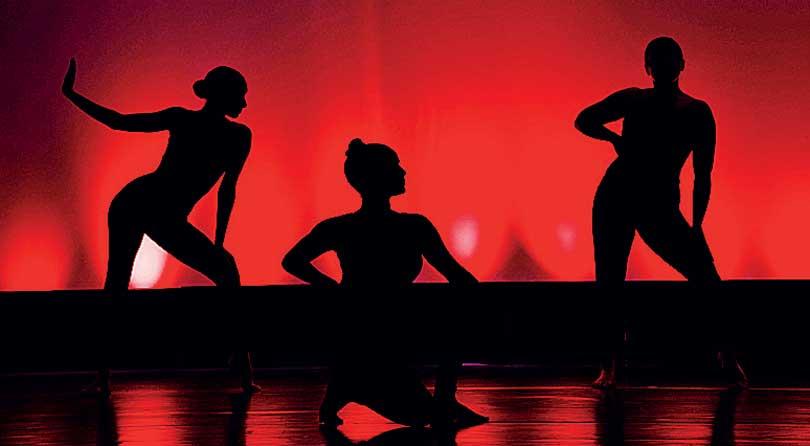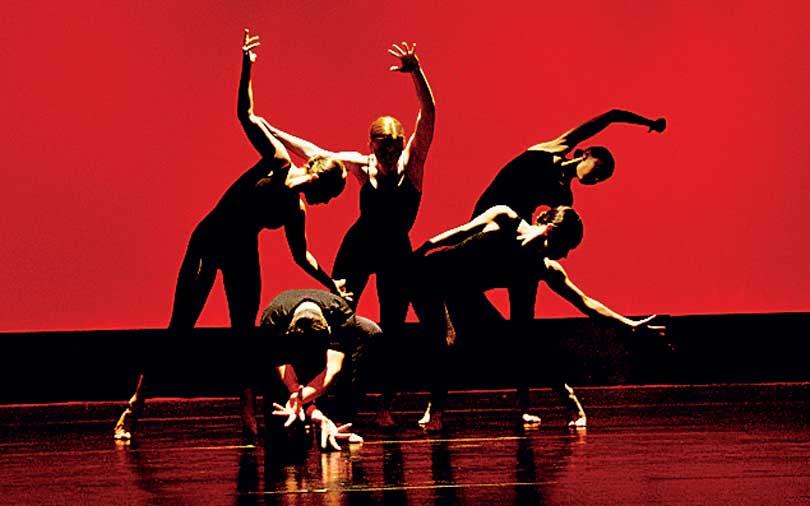Reply To:
Name - Reply Comment


 On recent episodes of Wellness Curated, featuring Psychologist Dr. Peter Lovatt and celebrity Bollywood Choreographer, Shiamak Davar, we discovered that dance enhances decision-making skills, increases the attention span, and fosters creativity. Besides, it improves one’s ability to focus and boosts overall mental health.
On recent episodes of Wellness Curated, featuring Psychologist Dr. Peter Lovatt and celebrity Bollywood Choreographer, Shiamak Davar, we discovered that dance enhances decision-making skills, increases the attention span, and fosters creativity. Besides, it improves one’s ability to focus and boosts overall mental health.
Numerous studies underscore the myriad positive effects of movement and physical activity on the body. On ‘The Dancing Brain’, a recent episode of my podcast, Wellness Curated, renowned psychologist and movement expert Dr Peter Lovatt explains, “Our brain is specialised for human movement, and therefore it’s no surprise that when you stimulate the brain by movement, it stimulates other areas of the brain.” Dr. Lovatt, a notable figure in the field of Dance Psychology, brings to the table an extensive  background in the psychological and therapeutic effects of movement. A co-founder of the Movement in Practice (MiP) Academy, he has devoted his career to teaching and writing about the transformative power of movement on humans. In 2020, he authored a ground-breaking book, “The Dance Cure,” which elaborates on the therapeutic power of dance. Navigating this terrain of dance as therapy, Dr. Lovatt’s insights echo in real-life narratives and clinical research.
background in the psychological and therapeutic effects of movement. A co-founder of the Movement in Practice (MiP) Academy, he has devoted his career to teaching and writing about the transformative power of movement on humans. In 2020, he authored a ground-breaking book, “The Dance Cure,” which elaborates on the therapeutic power of dance. Navigating this terrain of dance as therapy, Dr. Lovatt’s insights echo in real-life narratives and clinical research.
Case in point is the experience of movement therapist Tripura Kashyap with an autistic student. This teenager’s capacity to concentrate improved significantly, Kashyap observed – she progressed from being limited to 20 minute-sessions to effortlessly sailing through 40-minute sessions in merely six months. A 2021 study corroborates this anecdotal evidence, demonstrating that dance can be tremendously beneficial in treating various disorders, including autism spectrum disorder [ASD].
 EXPRESS YOURSELF
EXPRESS YOURSELF
The American Dance Therapy Association (ADTA) recognises dance as a holistic health enhancer, which merges physical, mental, emotional, and social aspects. This is supported by a Medical News Today meta-analysis of 41 trials which illustrated dance’s potential to alleviate anxiety and depression and boost cognitive and interpersonal skills. Shiamak Davar and Kashyap, both, add that dance, beyond enjoyment, caters to diverse individual needs from physical activity to emotional expression. On ‘Dance Heals,’ Davar asserted, “Besides physical healing, dance boosts confidence.” Erica Hornthal, a Chicago-based dance therapist, similarly emphasises body wisdom for healing, guiding her clients to tune into their bodies’ rhythms.
TIME TO HEAL
“Dance’s healing power demands consistent practice,” says Hornthal. Weekly sessions of an hour each are ideal. Kashyap stresses, “Movement is life,” and its benefits depend on one’s objectives. These benefits may be felt in three months or a year, but that shouldn’t discourage one from practising daily. Dr. Lovatt advocates for dance initiation at any age and recommends dancing thrice a week for 20 minutes for positive brain impact. Dr, Lovatt also points out that different dance styles and movements impact the brain differently. For those looking to stimulate their creativity, he recommends improv –where you go with the flow and enjoy impromptu moves – while for problem-solving, he believes one would see benefits by coordinating dance moves with others in a group. “This way, the dancers work together, building a bridge and sharpening their group problem-solving skills,” says Lovatt. Hornthal offers another reason to dance with others (if you really need one): “Dance is a nonverbal form of communication and expression that we are born with. It doesn’t require skill or talent,”.
 PERSONALISING DANCE’S POWER TO HEAL
PERSONALISING DANCE’S POWER TO HEAL
Dr. Lovatt’s insights about the varying impacts of different dance styles suggest there may be some merit in tailored approach to harnessing dance’s therapeutic powers. Kashyap, for instance, has innovatively conceptualised a ‘Movement Activity Basket.’ This is a set of activities specifically designed to target individual therapeutic objectives, created based on thorough movement assessment tests. Meanwhile, Hornthal underscores the inherent uniqueness in each person’s movement patterns, likening them to a ‘signature move’. Her work revolves around unveiling this signature and expanding upon it to foster resilience, empathy, and compassion. Even though each expert brings their unique methodologies to the table, their collective aim is crystal clear:
leveraging dance to accrue mental and physical benefits. Prioritising safety in the process of learning dance, Davar has engineered a preventative workout regimen to fortify crucial areas like the knee, lower back, and neck, thereby warding off potential future issues. As we twirl through the dance of life, it’s clear that merging the rhythm of our bodies with the melody of our minds can produce an orchestrated symphony of healing and growth. To delve deeper into the healing power of dance, tune into my episodes with Shiamak Davar: Dance Heals, and Dr Peter Lovatt: The Dancing Brain.